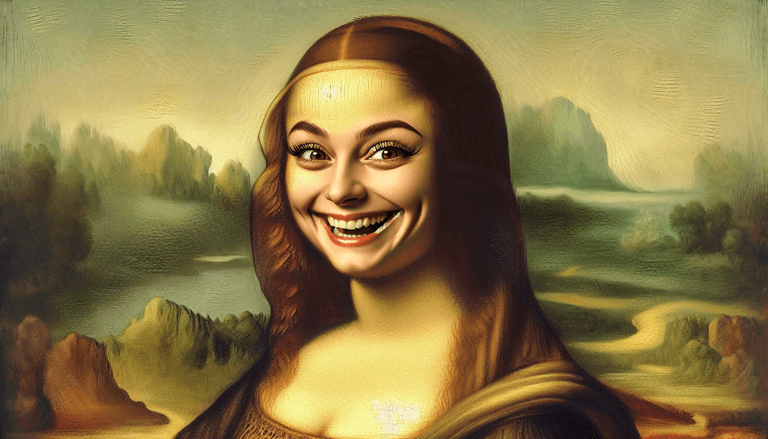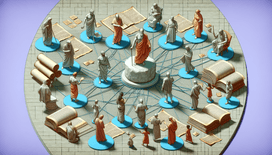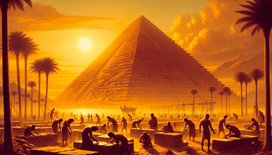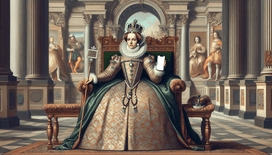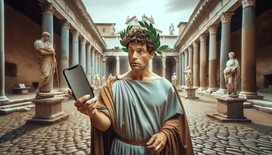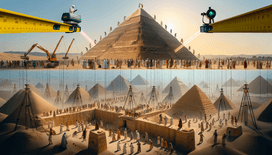As a writer with one foot in the Renaissance and the other planted firmly in the digital age, I often find myself wondering: what if Leonardo da Vinci, the epitome of curious genius, had access to the modern marvel that is the emoji? Picture it: a brushstroke here, a winking face there, the Mona Lisa as we've never seen her before. Grab your palettes, dear readers, we’re about to remix history with a sprinkle of modern tech intrigue.
The Renaissance Renaissance
Ah, the Renaissance – a time brimming with art, culture, and discovery. Leonardo da Vinci was the ultimate Renaissance man: painter, scientist, inventor, and probably the sort of chap who'd ask for your Wi-Fi password before he'd accept your cup of espresso. But what would have happened if, during one of his many painting deadlines, he was also frantically swiping through a collection of tiny, expressive symbols on his smartphone to find just the right mood for his latest masterpiece?
Mona Lisa's Many Moods
Painting the Mona Lisa, with her enigmatic smile that has puzzled art historians for centuries, must have been quite the task. Da Vinci, likely feeling the pressure of perfection, might have appreciated the succinct expressive power of emojis. Instead of endlessly toiling to capture that smile, he could've simply chosen the perfect emoji – a modest smiley or perhaps something more avant-garde like the 😜 emoji – to convey his desired effect.
Imagine a Mona Lisa lined with emoji borders: her left eye with a 😉 winking emoji, her right encapsulating a 😌 serene smile. Her famous smirk might be a little less mysterious and a lot more, shall we say, relatable to the Snapchat generation. And who’s to say she wouldn't have gone viral, becoming the world’s first meme?
Beyond the Canvas
Of course, Leonardo wouldn’t have limited his emoji usage to Mona alone. The Last Supper could’ve been an entirely different supper altogether, laden with reactions like 🤔 or 😱 from each apostle as they muttered through iMessage rather than lingering whispers. "Pass the salt, please!" might have been replaced with a quick message paired with a 🧂 emoji.
The potential doesn’t stop there: his numerous notebooks filled with inventions might have been more succinctly demonstrated with a smattering of pictographic metaphors. Imagine the helicopter sketches paired with a quick 🚁 emoji for effect. One might argue this early form of UI/UX would have left da Vinci much more time to court controversy, perhaps as a prolific meme-lord of his day.
Mysteries Solved?
Maybe with emojis at his disposal, Leonardo would’ve also cracked his other conundrums, like the intricacies of human anatomy or dimensional geometry, with clever shorthand like 🧬 for DNA or 🪐 for universe. In fact, with the emojis’ capacity to inject clarity into complex subjects, da Vinci’s audience might have multiplied exponentially. Renaissance forums would buzz as learned scholars debated over eggplant and peach emojis, pondering whether they were perhaps too lewd for cathedral frescoes.
Da Vinci: The Influencer
Leonardo, with his robust facial hair and insights extraordinary, could well have transcended from painter to influencer, using his emoji-laden posts to disseminate knowledge with the finesse of a modern-day TikTok creator. I envision him snapping selfies whilst adding emojis to the Venetian skyline, casually showcasing his latest inventions with captions as pithy as his sketches were detailed.
The Mona Lisa, recast with emoji expressions, might’ve tilted history itself. Renaissance art would shift, inextricably blended with a dash of emoji flourish. Modern art would thank its lucky stars (and ⭐️ emojis) for this unconventional twist. Smile or no smile, dear readers, we can be certain we’d all be "heart" reacting – or, at the very least, throwing a 👍 his way.
So, as you gaze upon Mona’s coy smile, ponder the "what ifs" of history and technology: what subtle cues from the past await digital translation? And on your next museum visit, whisper a silent thank you to the Art Gods that Leonardo didn’t have a smartphone – or else the Louvre’s electricity bill could’ve gone through the roof. 😂
